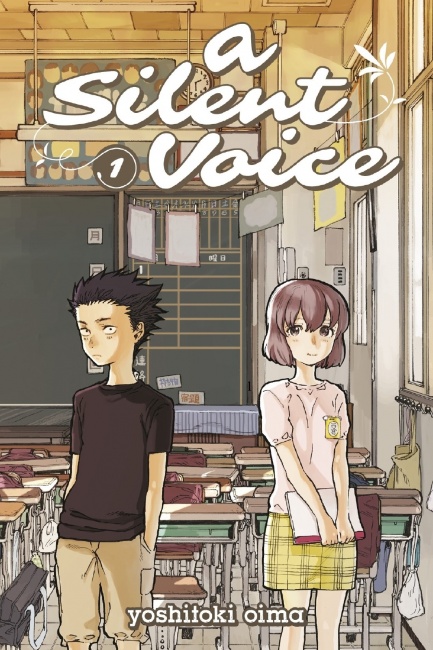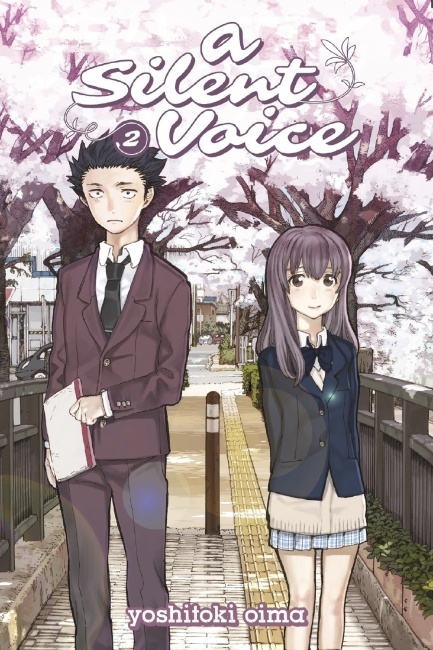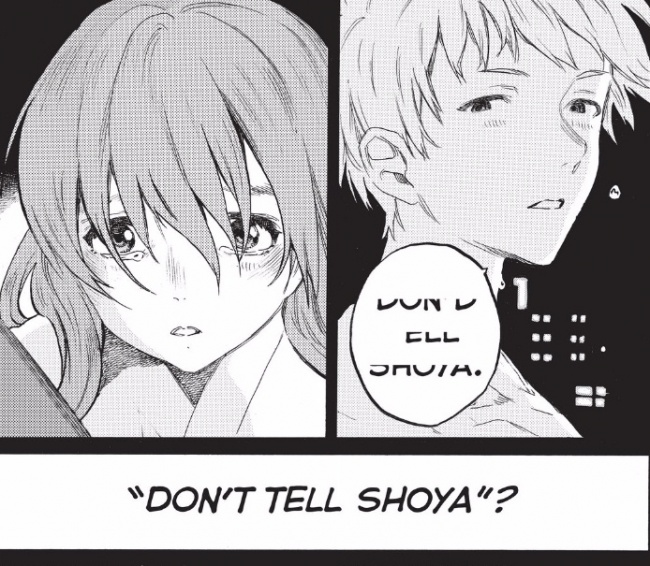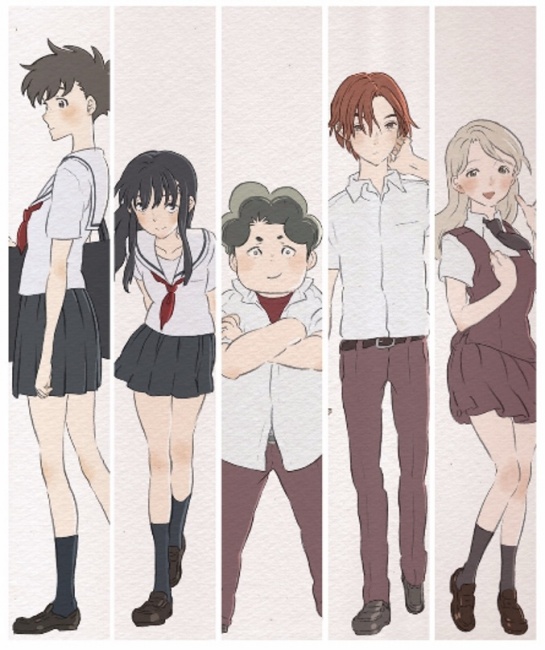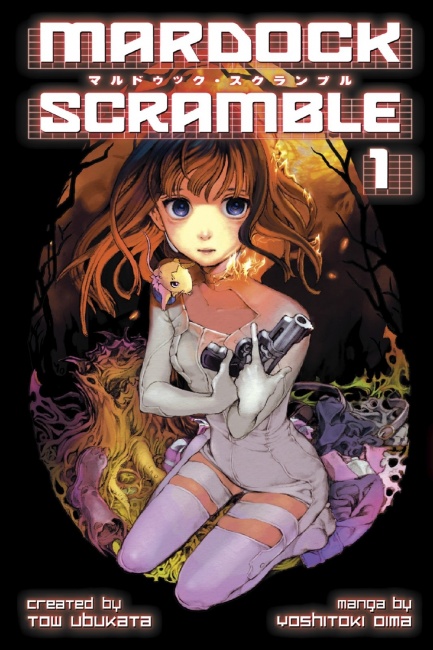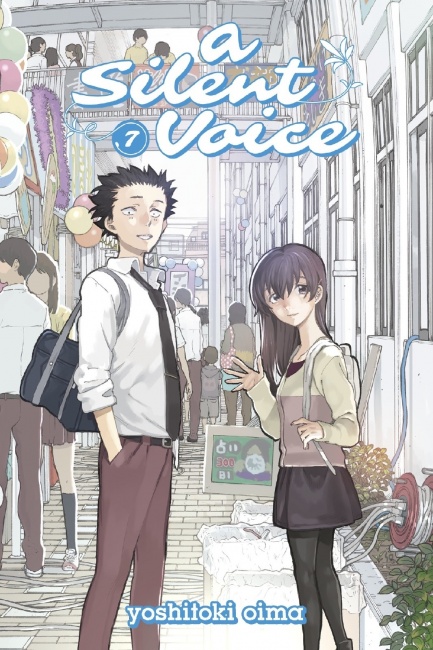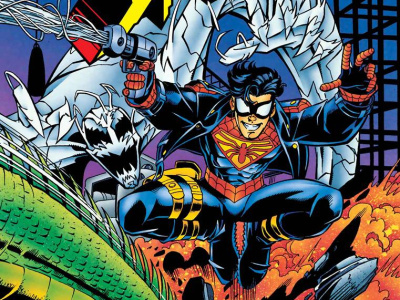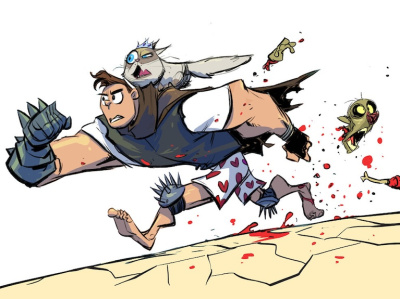Yoshitoki Oima was born in Gifu Prefecture, Japan in 1989. In 2008, a pilot manga of A Silent Voice won the 80th Annual Shonen Magazine Newcomer Manga Award. In 2009, she debuted as a mangaka with the manga adaptation of a novel by Tow Ubukata, Mardock Scramble. In 2013, a remake of the A Silent Voice pilot chapter ran as a one-shot manga in Weekly Shonen Magazine, which then went on to become a full series. It has been announced that A Silent Voice will be adapted into theatrical anime in September 2016.
A Silent Voice is the story of boy meets girl … except its main focus is on how difficult it is for one person to communicate with another, especially if that other person can’t hear you.
Yoshitoki Oima was only eighteen years old when she first started work on A Silent Voice. Most would-be mangaka aspire to going pro around that age, but what made Oima special was that she had a full story already in mind and the determination to tell it to the world. What led her to make that manga? Here, the creator of the Eisner-nominated manga series reveals her innermost thoughts for the first time.
When you were a child, what were you like?
Yoshitoki Oima: I was the youngest sibling in my family. So even though I wasn’t aware of it, I think I was pretty selfish [laughs]. I was a tomboy who liked to play imaginary gunfights. I was pretty active back then, although I became more of a gloomy person later.
Why is that?
A lot of stuff happened at school that made me that way. But when I was playing with friends, I was as happy as I can be.
Did you read any manga when you were growing up?
I did. I have a brother who is six years older than me, and he liked to buy and read manga. There was stacks of manga everywhere at home, so I picked up some of them and started to read it myself. But I wasn’t too deeply into it. I only read a specific series from a certain manga magazine.
I’ve been most influenced by a manga called 3x3 Eyes [by Yuzo Takada]. That was the first series I collected myself.
Why and how did you become a mangaka?
When I was spending a lot of time reading and drawing manga, the thought to be a mangaka was at the back of my mind. I was actually drawing before I was reading. But I was kind of embarrassed to tell anyone about my dream.
Why was that?
Everybody around me had more specific occupations in mind that sounded good, like becoming a florist. If I say that I want to become a mangaka, it would’ve sounded like I just wanted to goof around. A mangaka can provide entertainment, but I don’t know if it would contribute to society in any specific way.
Do you like writing stories or drawing art more?
When I was younger, I liked drawing more. But now I like making stories, or rather, it’s something I’ve been focusing on. It’s hard to say. Drawing art and writing a story are both fun and yet difficult.
How did you think of the idea for A Silent Voice?
When I used to live in Gifu, I started drawing a manga to submit to a publisher in Tokyo, where I wanted to live. But my mom was against the idea of me moving to Tokyo and asked me things like, “What are you going to do about the money?” So I thought if my manga won an award, the prize money could give me a head start to live in Tokyo. And in order to make my manga, I wanted to work with whatever materials were accessible to me at the time in Gifu. I wanted to draw something I could only draw now, while I was in Gifu. So I started to incorporate things like the scenery of Gifu in the backgrounds and the subject of people with hearing disabilities. My mom was a sign-language translator, so I could ask her and people around her about the details of sign language and the reality of hearing disability.
So you made this story with the support of your family?
Yes, for sure. And I had to work it out that way. Otherwise I wouldn’t be able to survive.
Why did you decide to write this story from the perspective someone who was once a bully?
First of all, I didn’t want to write this story from the perspective of the one who was getting bullied, because I didn’t think that was interesting to me or anyone else. To me, it’s easier to get into the story from the perspective of a bully, or Shota’s point of view. I’m sure more readers can relate to Shota than to Shoko. Most people can only speculate what it feels like to be a girl with a disability who gets bullied. But the truth is, you won’t be able to know how she really feels. I thought that was the more important point to convey. So I didn’t want to reveal Shoko’s inner thoughts or her true feelings.
Do you have any personal experience with bullying or being bullied?
Bullying in real life is not very visible on the surface. Sometimes you can tell someone is talking behind your back, but I’ve never gone far enough to confirm it. So I don’t know. I wouldn’t register it as bullying, but I still get negative vibes from it. I’d just stop there.
Shoya is a simple-minded person who only thinks of things in terms of whether if something feels right or wrong. Shoko wishes she could do so much more, but in reality, nothing goes according to her will. She may think most people don’t understand her.
Do you have any models for the characters in A Silent Voice?
I can think of people who have some resemblance to the characters. For example, Naoka reminds me of a girl who was high up the social ladder of my class. Miyoko reminds me of a girl in my high school who I thought was really cool. If Tomohiro was real, I’d want to stay away from him. But his inner self is very close to mine, in the sense he clings to his friends. But for the most part, those characters consist of certain aspects of myself, but more exaggerated.
I would say Miyoko. Maybe not my favorite character per se, but I feel like I go too easy on her … like I don’t want to give her too harsh of an obstacle.
How did you come up with the interactions between these characters?
I turn them against each other in my head [laughs]. When I am drawing a character, I become that person. So I know exactly how each one of these guys feels like. Even people like Miki, Naoka, and the school teachers like Mr. Takeuchi and Ms. Kita–– a lot of readers assume I portray these characters as the “bad guys,” but that’s not true.
It’s hard to say anyone from A Silent Voice is “bad” or “evil.”
I don’t quite get why people think in such ways. When I look at people’s reactions to this manga online, it makes me wonder why certain people feel a certain way about a certain character.
Maybe it’s because it feels “too close to home.”
Yeah, maybe [laughs].
Those were purely just ideas that I had. At first, I had a vision of a classroom scene with all the classmates’ faces crossed out with X’s. Because I thought of this scene, I dug deeper into developing Shota and other characters’ personality. The scene from Shoko’s point of view, when the words in the speech bubble get cut off, the whole point is to show the world she lives in. I don’t know if this was the right way to express it. Because at the end of the day, I don’t really know what it’s like or how it feels to be in her world. But I want to know. That’s what made me struggle the most.
What does it mean that Shota sees X’s on people faces?
It means he doesn’t want to, or cannot see that person’s face. It’s like the symbolism of indifference. Or sometime you are really interested in that person, but trying not to be.
There’s many hidden truths and inner thoughts of each character that won’t be revealed until the end of this manga. Did you plan this series to be this way?
When I started making this manga, I already had a rough idea of the overall story all the way until the end. In my original idea, Shoko was going to be the one to go through what Shoya went through in the end. But my editor was against the idea. I mean, I kind of get it too. But then what? I had to think about what to do with the story when one of the main characters was suddenly “out of the picture.” That’s when I switched writing the story from Shoya’s perspective to everybody else’s. In my favorite video game, Chrono Trigger, the main character also goes out of the picture. Meanwhile, the main characters’ allies try their best to hold down the situation. I think I was influenced by that.
Mardock Scramble was based on a pre-existing novel. So I’ve read it over and over again, and every time I read it, I’ve found something new about it … It was very hard. In some sense, I completely lost my own imagination and the ability to write my own story at that time. Instead, I learned just how much story I can incorporate into one 45-page chapter each month to satisfy a reader. I was very much focused on just Mardock Scramble. It was a good training.
Is that why your storytelling was fully embraced in A Silent Voice?
I couldn’t stand the fact I hadn’t made my own manga for over three years. I didn’t care what anybody thought about my manga at that point.
It sounds like the time and effort you’ve spent on Mardock Scramble somehow lead up to the making of A Silent Voice.
It does. While I was working on Mardock Scramble, it seemed like I wasn’t making my own manga. But I had something to draw in front of me. That was what was given to me. I was constantly searching for the reason why Mardock Scramble was given to me. And I feel like found some answers. In Mardock Scramble, the main character Balot says she wants to die. As a reader, I didn’t get why … and I wanted to know why. I wanted to dig deeper. What leads a person to think in such way? I felt like it was my duty to really understand this point. The answers I got from working on Mardock Scramble carried through to A Silent Voice.
To me, it was almost miraculous I got to work on a manga about communication. A lot of things led up for me to make this manga about the difficulty of communication. I am just fascinated by the feedback that I get about this piece, from anyone. I feel so lucky to have opportunities like this interview, to talk about why I’ve made such manga. And the fact so many people recommended this manga to other people like their friends makes me feel so fortunate.
What kind of audience would you want to read A Silent Voice?
I want somebody like Shoko - who feels lonely - to read this manga.
Do you have any comments for the fans of A Silent Voice?
If you feel anything, or find anything in this manga, I would be very happy. Even if you don’t, the fact that you’ve still read this manga would make me happy.
Thank you!




